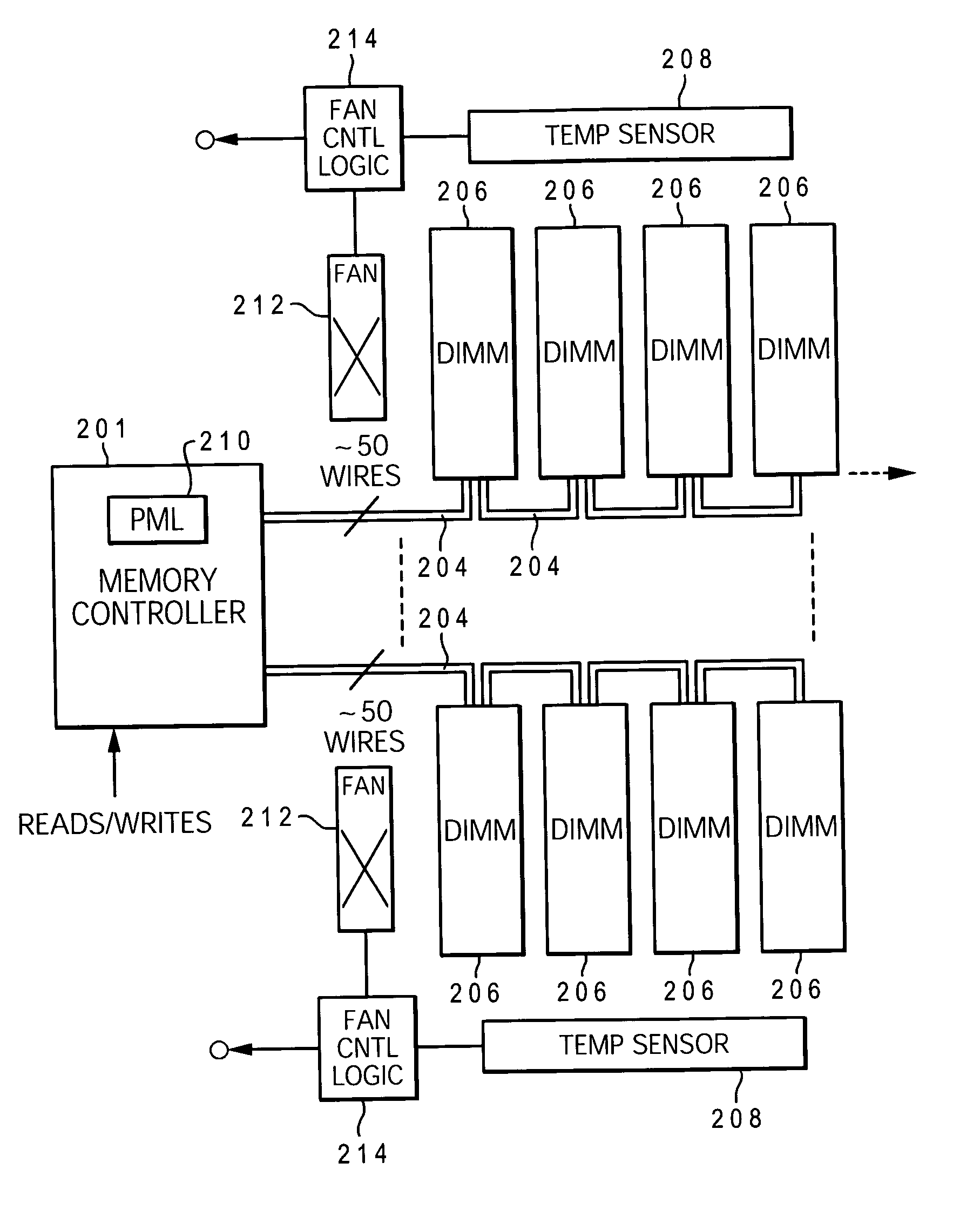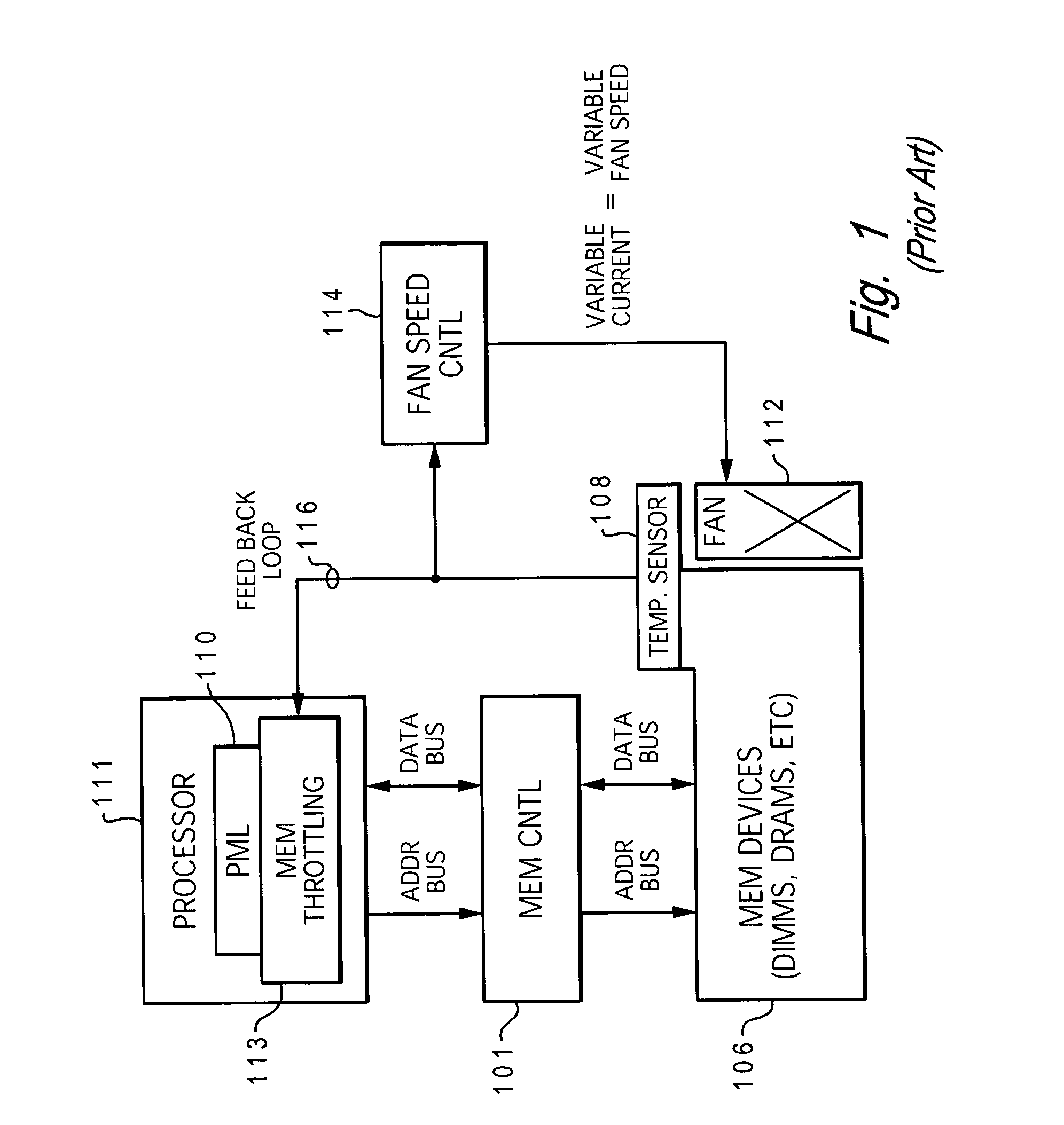Dynamic power management via DIMM read operation limiter
a technology of dynamic power management and dimm read, which is applied in the direction of liquid/fluent solid measurement, instruments, sustainable buildings, etc., can solve the problems of reducing the airflow and cooling capacity at the chip level, increasing the power dissipation per dimm, and not increasing the volume of space allocated to the drams on the memory modules
- Summary
- Abstract
- Description
- Claims
- Application Information
AI Technical Summary
Benefits of technology
Problems solved by technology
Method used
Image
Examples
Embodiment Construction
[0032] The present invention provides a method and system for enabling directed temperature / power management at the DIMM-level and / or DRAM-level utilizing intelligent scheduling of memory access operations received at the memory controller. The invention manages power usage by lower-level memory devices and prevents overheating (hot spots) at the individual DIMM and / or DRAM levels, while enabling efficient distribution of the memory access commands to the various DIMMs in a multi-DIMM memory subsystem to enable maximum use of the available system data bus bandwidth and DIMM data bus bandwidth.
[0033] Hot spots within the memory subsystem, caused by operating the DIMMs / DRAMs above predetermined / preset threshold power / temperature, are avoided / controlled by logic within the memory controller. The memory controller logic throttles the number / frequency at which commands (read / write operations) are issued to the specific DIMM / DRAM based on the specific DIMM / DRAM reaching the preset thresh...
PUM
 Login to View More
Login to View More Abstract
Description
Claims
Application Information
 Login to View More
Login to View More - R&D
- Intellectual Property
- Life Sciences
- Materials
- Tech Scout
- Unparalleled Data Quality
- Higher Quality Content
- 60% Fewer Hallucinations
Browse by: Latest US Patents, China's latest patents, Technical Efficacy Thesaurus, Application Domain, Technology Topic, Popular Technical Reports.
© 2025 PatSnap. All rights reserved.Legal|Privacy policy|Modern Slavery Act Transparency Statement|Sitemap|About US| Contact US: help@patsnap.com



